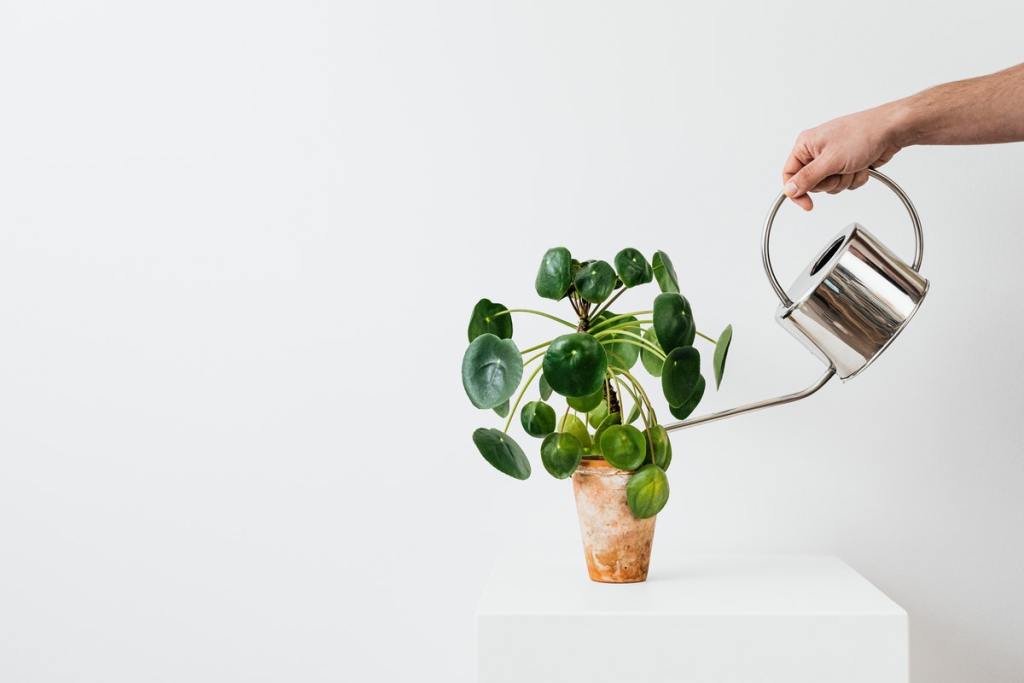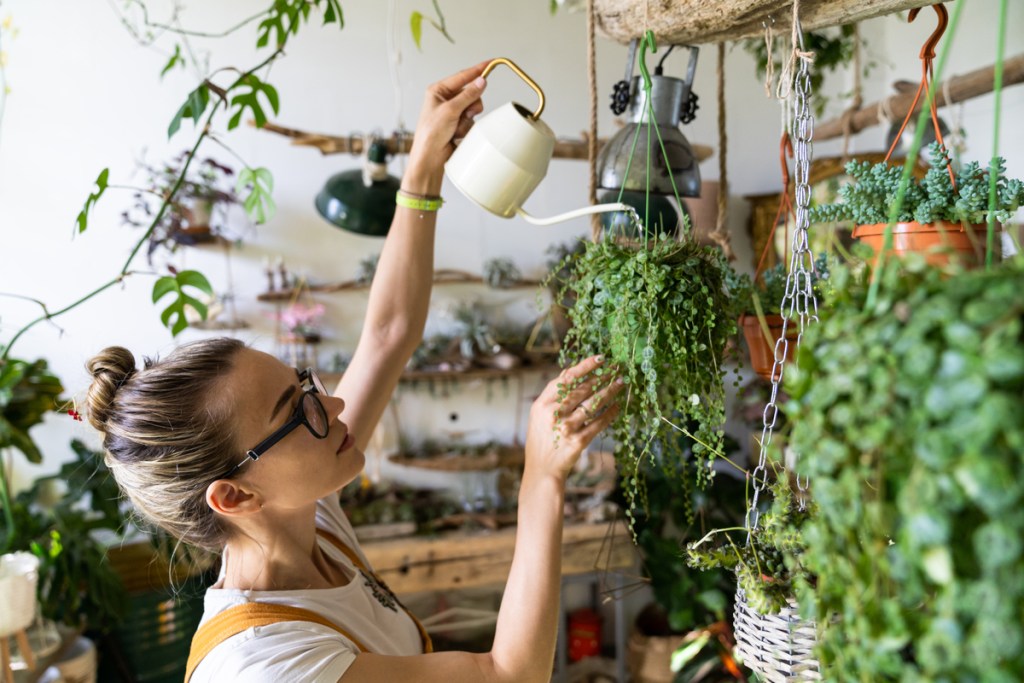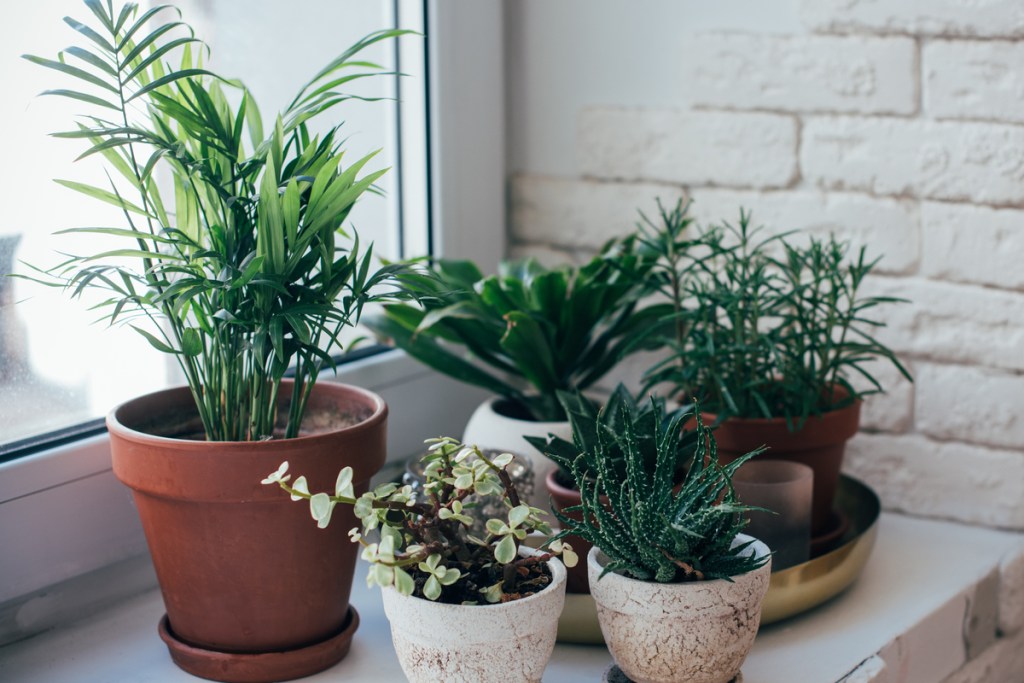Tending to houseplants can be quite different from tending to garden beds. If you aren’t used to any form of container growing, you may be wondering, “How much water does a plant need to grow?” Since plants outside are also exposed to weather conditions and other environmental factors, they have slightly different care needs than plants grown indoors. Read on to learn more about houseplant water needs.

How often should you water your houseplants?
Your plant’s water requirements will vary depending on the type of plant it is, so it’s important to research each plant you have to make sure you’re giving it the best care possible. Although no two plants are the same, there are some general things to keep in mind no matter the type of plant. Unlike outdoor gardening, it’s wise not to water on a specific schedule. Instead, check your plants every day or two to see how they’re doing. You’ll find that different plants will need to be watered on different days, and some may not need to be watered every week.
You always want to put your plants in pots that have sufficient drainage. This allows you to thoroughly water them until some drips into the tray. There is still a concern about overwatering, but giving the excess water a place to go will ensure that the soil and roots have some to absorb and don’t sit stagnant in soggy soil, which can cause your roots to mold and rot.
Keep in mind that the size of your plant will also help determine how much water it needs, which is why small plants should never be immediately placed in large pots. A small plant won’t need as much water as a big plant, so if it has too much space, there will be an excess of water in the soil around it and drown your plant. Similarly, when a plant starts to outgrow its pot, you’ll want to repot it to a larger space to ensure it has the room it needs to grow. Otherwise, it may not get enough water for its size.
Most importantly, always use room temperature water when watering your plants. Anything too hot or too cold could shock the roots and cause damage.

Do houseplants need more water than outdoor plants?
Plants in containers will often dry out faster than plants outside, so it’s important that you don’t treat your indoor plants the same as you would your outdoor plants. Every plant has preferred growing conditions, and even within the same type of plant, you’ll find that care changes when the plants are brought indoors or grown in containers (e.g., growing tomatoes outdoors vs. growing tomatoes indoors).

Is it possible to overwater your houseplants?
Yes! Having pots with drainage holes will help aid against overwatering, but it is possible to provide your houseplants with too much water. As mentioned above, you’ll be able to soak your soil and know when the plant has enough water when it starts to seep into the drip tray; however, you don’t want to keep the soil constantly wet. You should always let the top inch or two of soil dry out before watering your plant again, otherwise, the roots won’t get enough oxygen and the plant could drown.
Luckily, there will be indicators of overwatering before your plant is beyond repair. One of the biggest signs is wilting, which often throws people off because plants will start to droop when they aren’t being watered enough, too. So, this is where you check the soil. If it’s moist, you’re giving it too much water and need to let the plant dry out a bit. If the overwatering is particularly bad, you may even start to smell some kind of fungi or bacteria growing in the soil due to the moisture.

How to combat overwatering
To combat any overwatering, you can either try to wait and see if the soil dries out on its own, or take the plant out of the pot, allow the roots to dry out a bit, and repot it in drier soil. If you pick that option, you’ll want to wait a few days before watering again. Be sure to cut off any mushy or dying parts of your plant when you repot it so that any nutrients from the soil will be put toward the healthier leaves and stems.
Above all, it may take some trial and error. Every plant has different water requirements, and even then, it doesn’t always mean that they’re hard and fast rules. The trick here is getting to know each individual plant, what it likes, what it needs, and where it’s happiest in your home.
Editors' Recommendations
- Stunning Monstera plants that you should add to your indoor plant collection
- Beyond basil and cilantro, add these unique plants to your indoor herb garden
- 5 easy-care spider plant varieties perfect for any home garden
- Easy hoya plants to add to your indoor plant collection
- Do ZZ plants cause cancer? Here’s the definitive answer



